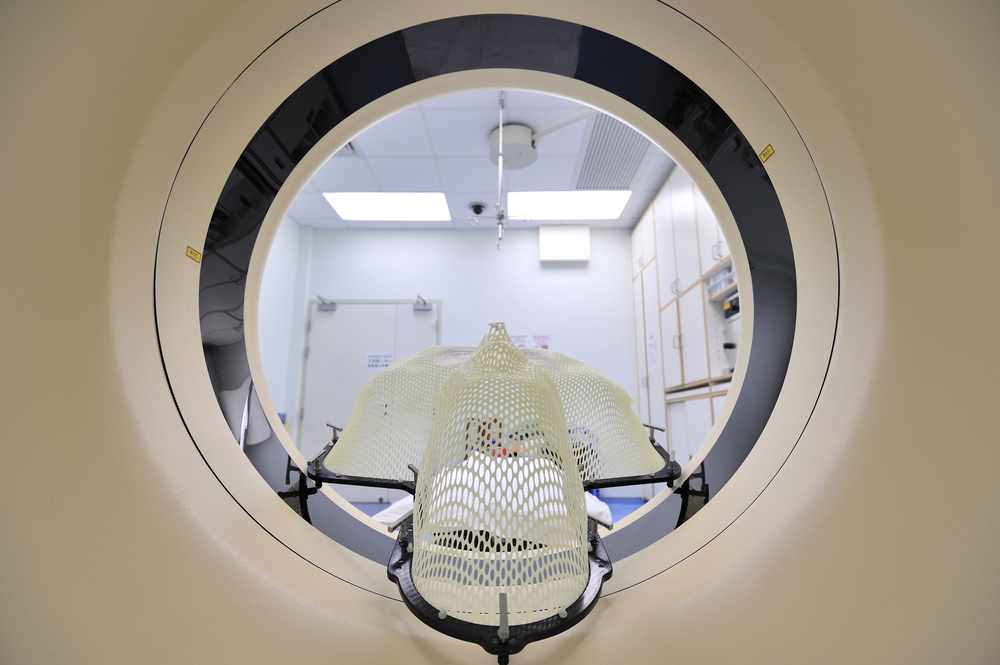-
Mayo Clinic researchers to present findings at ASTRO annual meeting

ROCHESTER, Minn. — Mayo Clinic physicians will present findings at the American Society for Therapeutic Radiology and Oncology annual meeting Sept. 15–18 in Chicago.
Key Mayo Clinic-led studies include:
Prolonged radiation therapy does not improve brain tumor control
Embargoed until Sunday, Sept. 15, at 1 p.m. CDT
Prolonged radiation therapy for brain cancer patients does not improve brain tumor control and may have more side effects, according to Mayo Clinic research, which concludes that 10 treatments of whole-brain radiotherapy should be the standard of care. Current international standards for whole-brain radiotherapy call for 10 or 15 treatments.
Daniel Trifiletti, M.D., a Mayo Clinic radiation oncologist and lead author, says that the results suggest that prolonged radiation treatments with advanced radiation equipment do not improve tumor control and may have more side effects. The results mirror trends seen in treatment for other cancers, including prostate and breast cancer.
Native American cancer patients tend to have significant concerns about radiation therapy
Embargoed until Tuesday, Sept. 17, at 2:15 p.m. CDT
Native American cancer patients tend to have significant concerns about radiation therapy that are not being addressed adequately, according to a collaborative study by researchers at Mayo Clinic in Arizona and Phoenix Indian Medical Center. Fifty American Indian or Alaska Native radiation patients at Phoenix Indian Medical Center were surveyed regarding attitudes and concerns about radiation therapy.
The patients surveyed expressed concern about the side effects of radiation therapy, with special concerns about cost, transportation to and from the treatment center, and insurance compatibility.
Samir Patel, M.D., a radiation oncologist at Mayo Clinic in Arizona and the study's lead author, says that the results are a reminder that radiation oncologists need to be mindful of patient concerns. Native Americans have the worst five-year cancer survival of all racial groups in the U.S.
"We sought to better understand Native American views toward radiation therapy in this study in hopes of developing improved interventions aimed at garnering better acceptance of radiation therapy," says Dr. Patel.
Culturally specific education and adjustments in scheduled doses of radiation therapy are two strategies that could increase acceptance among Native American patients, Dr. Patel says.
DNA in blood test may help identify patients with HPV-associated cancers
Embargoed until Tuesday, Sept. 17, at 8:10 a.m. CDT
A Mayo Clinic study to be presented as late-breaking research at the meeting suggests that a DNA blood test could be used to identify patients with HPV-associated cancers. The test also may help in subtyping HPV without requiring a biopsy of the tumor.
There are more than 100 varieties of HPV, and infection with HPV can cause skin or mucous membrane growths, such as warts. Some types of HPV infection can cause cancer. The study involved patients treated at Mayo Clinic for cancers of the head and neck associated with HPV and investigated whether DNA shed by a patient's tumor was detectable before and after surgery.
"Our results validated this test as reliable in detecting the highest risk subtypes of HPV," says David Routman, M.D., a Mayo Clinic radiation oncologist resident. The test detected HPV circulating tumor DNA in 93% of patients prior to any treatment and 43% after treatment. Patients who had detectable tumor DNA after surgery were more likely to have recurrence of cancer, the researchers found.
"This blood test could be used to distinguish patients with HPV-associated cancers from other types of cancer as well as to subtype the HPV without requiring a biopsy," Dr. Routman says.
Daniel Ma, M.D., a Mayo Clinic radiation oncologist, was lead investigator for the study, which was conducted in collaboration with University of North Carolina researchers.
PD-L1 contained within cancer cells has role in making the cells more resistant to therapy
Embargoed until Wednesday, Sept. 18, at 8 a.m. CDT
The protein PD-L1 is frequently present on the surface of cancer cells and is known for its role in helping cancer cells escape the immune system by shutting down immune cells’ anti-tumor function. Mayo Clinic-led researchers have discovered a new role for PD-L1 in cancer. They found that cancer cells also use PD-L1 to promote their resistance to cancer therapy by improving their ability to fix DNA damage caused by radiotherapy or chemotherapy. According to Robert Mutter, M.D., a Mayo Clinic radiation oncologist and co-corresponding author along with Zhenkun Lou, Ph.D., and Haidong Dong, M.D., an antibody named H1A can be used to target this function of PD-L1 in cancers.
H1A was developed by Dr. Dong, and Mayo Clinic postdoctoral fellow Xinyi Tu discovered it decreases the levels of PD-L1 inside the cancer cells, making tumors more sensitive to radiotherapy and chemotherapy. Dr. Dong is part of the Mayo Clinic Cancer Center’s David F. and Margaret T. Grohne Cancer Immunology and Immunotherapy Program. The program studies the mechanisms involved in cancer development, how the immune system responds to cancer, develops and tests immune therapies for cancer patients.
"Our findings suggest that PD-L1 inside of cancer cells is a new target to sensitize cancer to radiotherapy and chemotherapy," Dr. Mutter says. "In the future, the H1A or other strategies that prevent PD-L1 from carrying out this newly discovered role inside of cancer cells may be used to improve the efficacy of cancer therapy."
###
About Mayo Clinic
Mayo Clinic is a nonprofit organization committed to innovation in clinical practice, education and research, and providing compassion, expertise and answers to everyone who needs healing. Visit the Mayo Clinic News Network for additional Mayo Clinic news and An Inside Look at Mayo Clinic for more information about Mayo.
Media contact:
- Joe Dangor, Mayo Clinic Public Affairs, 507-284-5005, newsbureau@mayo.edu







